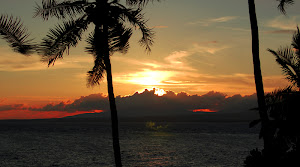1,200 meters above sea level, the Philippine-American-Japanese shrine is located at Barangay Sagbang, Built in 1977 to commemorate the spot where a heated battle took place in World War Two, it stands as a three nation memorial to this conflict’s end.
On 26 April, 1945 remnants of the 164th U.S. infantry went ashore at Sibulan, some five miles (8 km) north of Dumaguete, rendezvoused with a Reconnaissance Troop of the 40th Division, and in two days, attacked the 1,300 strong Japanese force entrenched in forbidding hill positions surrounding Dumaguete. One of these sites was where the shrine now stands in silent and all but forgotten tribute.
It is possible to reach the shrine by motorcycle in dry weather, but it is a dangerous and tricky ascent. There are actually two routes going to the shrine. One goes up from Balugo Valencia just outside Dumaguete, and the other goes around the mountain from Valencia, near Cassaroro falls. Either route is arduous, and should only be attempted by experienced motorcyclists. The trail winds up and down the moutain with up to 60% grades in some locations. Loose gravel and washouts are common. The safest way to visit is to hire a jeep or four wheeler to make the trip. Given that there are few signs indicating the way, a guide would be a good idea as well.
True to our adventurous nature… we traveled to the shrine with none of the above. And as a further testament to our adventurous spirit, we not only rode our motorcycles to the shrine, but made the complete round trip from Balugo, to the shrine, then on to Valencia! The ride was the high point of the trip as it turned out.
The shrine itself is in a state of serious neglect. Not that the property is not well kept, there is simply nothing there to give a clue as to what the place actually is. There are no plaques, (rumour has it the local Barangay captain took the monument plaque and put away for safe keeping??), no signage of any kind, nor anyone that seems to be on duty to collect the 10 Peso entrance fee. That said, the Japanese Shrine offers an incredible view of the Dumaguete harbour, Cebu, and Siquijor island. It is easy to see why the Japanese saw this as an excellent defensive position. It is a beautiful spot, but I am not sure everyone will have their expectations met if they are expecting any kind of organized presentation of historical information.
There is a monkey in a cage…
After hanging out and catching our breath from our motocross expedition up the hill, we decided to trek on to Valencia, hoping the road there would be even just a bit less difficult. It wasn’t. The hardest part was finding the road to Valencia, as the shrine access road was a dead end. We tried to ask the few folks at the shrine, all had varying stories as to the whereabouts of the road continuing to Valencia. I had a good idea that the fork in the trail we had passed a few kilometers down the road was the way. As it turned out, after asking several more passers by we came to the point where we had to decide. Back the way we came, or on to unknown parts in search Valencia.
It was a no brainer, on to the unknown we would go. The road was a bit longer in distance than our ascent, but the inclines were more mild, still, washed out dirt trails were the norm. As we turned and twisted towards Valencia throught the mountains, we were occasionally forced to stop just to take in the outstanding vistas presented to us. Finally we came to a concrete road and a stream forded by a bridge. We again stopped our bikes and enjoyed a moment at this last bit of primitive Philippines before trekking on to now nearby by Valencia.
After a kilometer or three, we came to the main road to Valencia. We stopped at Tejeros swimming area to have a beer at the restaurant located adjacent. Three beers later and a hot meal and we were recounting our newest adventure to ourselves and wondering how many others had followed our path.
Included as an imbedded video is a piece done by a Japanese television crew some years ago. The slide show is from our trip 3/20/08 Enjoy.
Thursday, March 20, 2008
Japanese-American-Philippine Shrine
Labels:
history,
Japanese,
Japanese shrine,
Mountains
Subscribe to:
Post Comments (Atom)




No comments:
Post a Comment